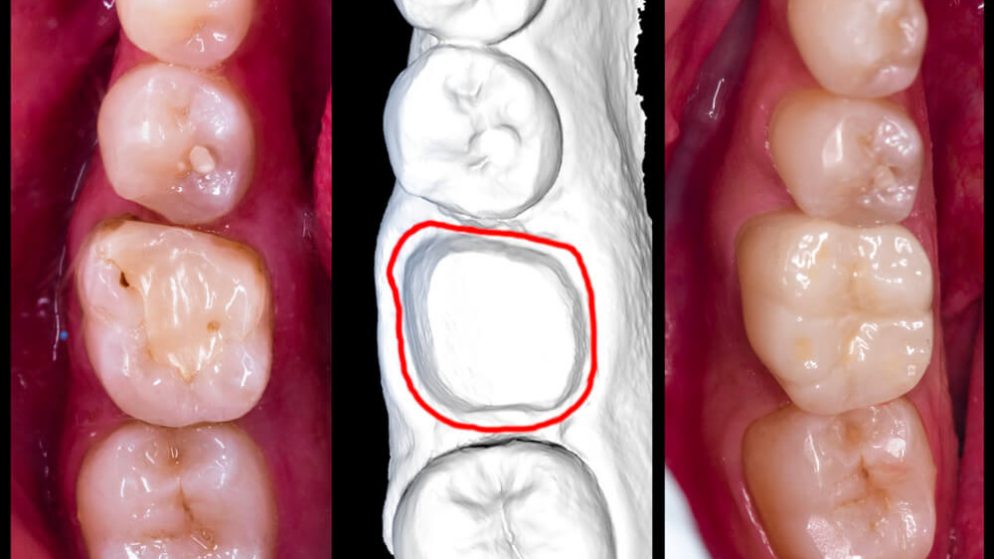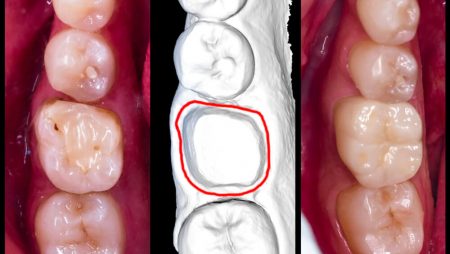



Get new exclusive access to healthcare business reports & breaking news




One of a dentist’s main tasks is taking dental impressions, a mandatory step for the creation of prostheses, inlays, bites and whitening masks, as well as for developing custom-made impression trays. It is the practitioner’s responsibility to choose the most appropriate impression technique – alginate impression, precision impression on natural teeth or impression on implants – to suit the purpose of the treatment and the patient’s needs.
Impression on implants technique
In order to fabricate a prosthesis, the dental laboratory may require accurate and extremely precise information. The orthodontist is therefore required to record the position of the implant and the transfer, using the impression on implants technique. This procedure is carried out using addition silicones, choosing one of two different approaches to suit the specific case. It is possible, for instance, to opt for the pick-up technique, characterized by a long transfer, so that it comes out of the tray and remains embedded in the impression material. In this case, the practitioner will choose a custom or ready-made resin tray with holes at the appropriate points. Alternatively, it is possible to use a closed tray impression technique, performed in the presence of the transfer, which will only be unscrewed once the material used is completely cured. Only then will the transfer be inserted into the impression obtained and removed from the oral cavity.
Alginate impressions
Alginate is an impression material characterized by short working and setting times. Taking a more in-depth look at this material, it is useful to remember that alginate is a compound derived from the alginic acid present in certain seaweeds: it is a hydrophilic impression material containing sodium alginate and calcium alginate.
Alginate is used in combination with a perforated metal impression tray, in order to guarantee good mechanical retention. When mixed vigorously and evenly with water, alginate powder produces a smooth, lump- and bubble-free paste, ready to be spread onto the tray. Although the material sets rapidly with minimal discomfort for the patient, it does not provide great precision, making alginate ideal for case studies and the fabrication of temporary prostheses. In situations requiring greater precision, alternative impression materials should be used, for example, elastomers, the most recently introduced impression materials, the strong points of which include precisely high fidelity in recording details.
Precision impressions on natural teeth
Before taking the impression, one or two displacement cords must be applied to obtain an accurate reading of the prepared margin. The impression can then be taken using a single step or double step technique. With the former technique, once the adhesive has been applied and allowed to dry, Heavy Body PVS or putty is placed on the impression tray, and Light Body PVS is applied directly on the teeth concerned. At this point, it is possible to introduce the impression tray into the oral cavity and take the impression.
As the name suggests, the double step technique differs from that described above in that it consists of two separate steps. In the first step, the impression is taken using Heavy Body material or putty. Once this preliminary impression is ready and the undercuts have been removed, it is possible to analyze the negative copy obtained. Having checked that the preliminary impression can be passively fitted over the arch, the dentist then applies Light Body material to the teeth of interest, in order to take the second impression.
Removable dentures
Removable dentures can be made using two of the products mentioned previously, namely alginate and PVS. Custom impression trays are usually used to fabricate this type of prosthesis. They are devices that are made to measure with light-cured resins, without jeopardizing the soft tissues, neurovascular bundles and areas characterized by complex muscle dynamics. It is important, when using alginates, to also make provision for holes larger than those made when using polysulphides, in order to ensure greater impression material retention. The result will be a precise impression, obtained with greater patient comfort and less wastage of material. The risk of mucosal compression and material deformation is in any case considerably reduced.